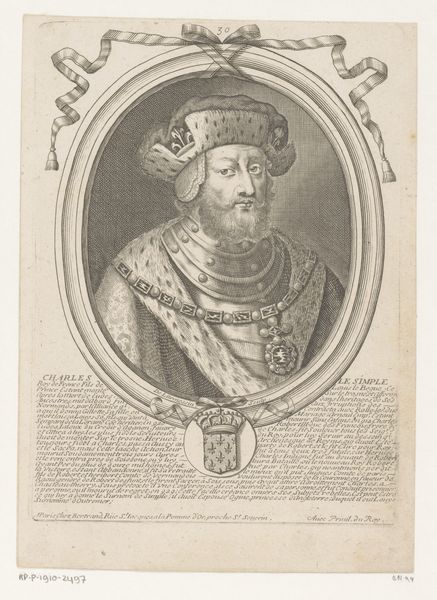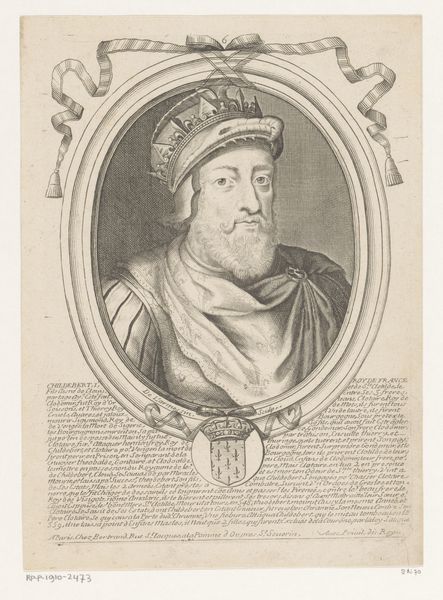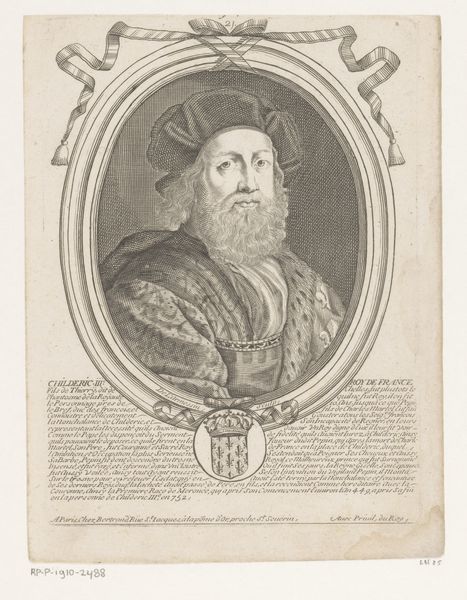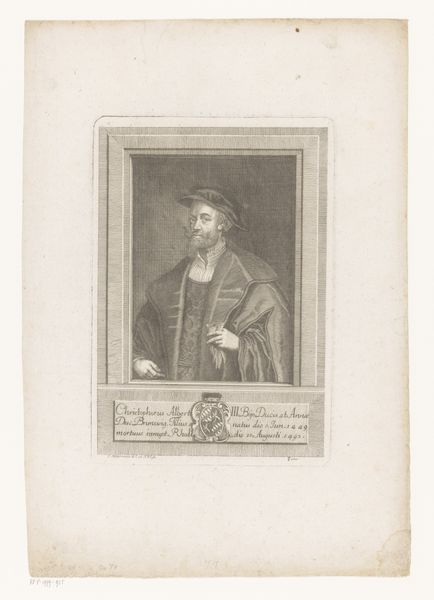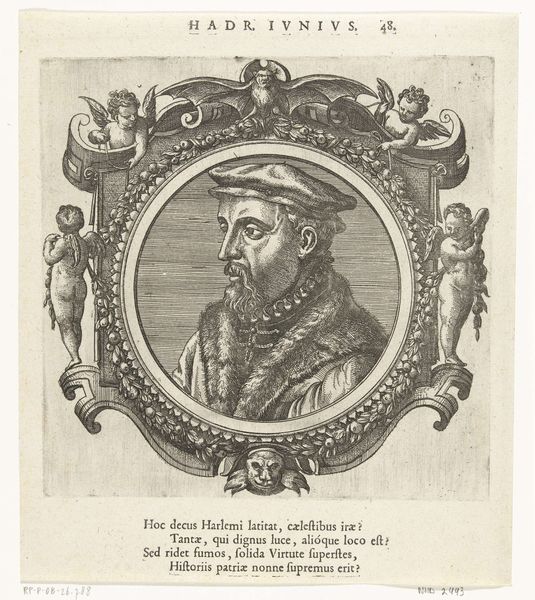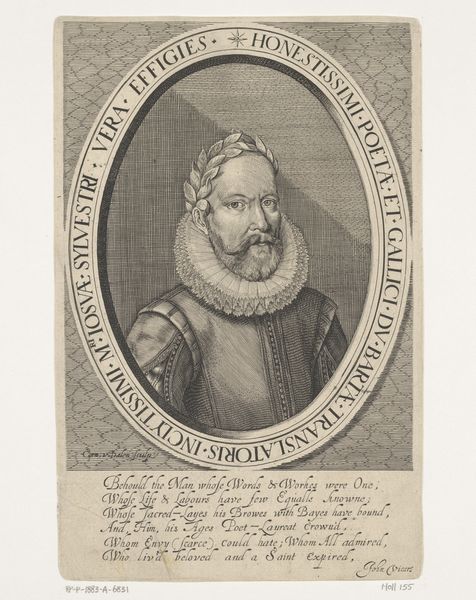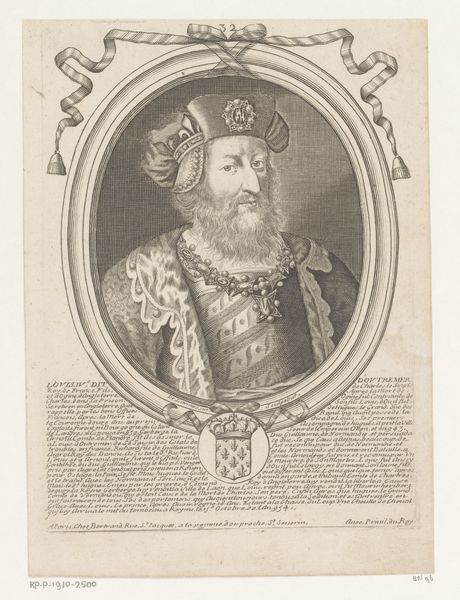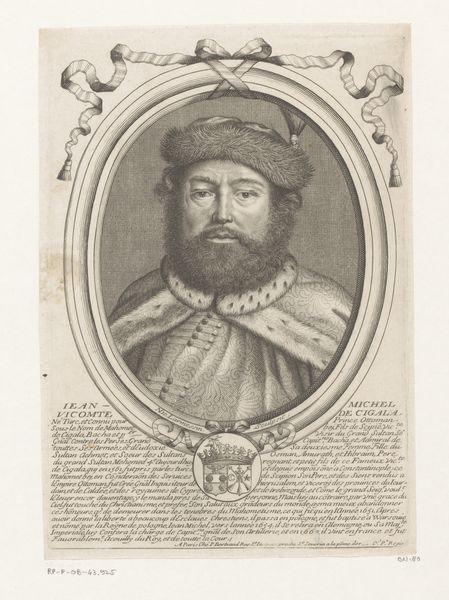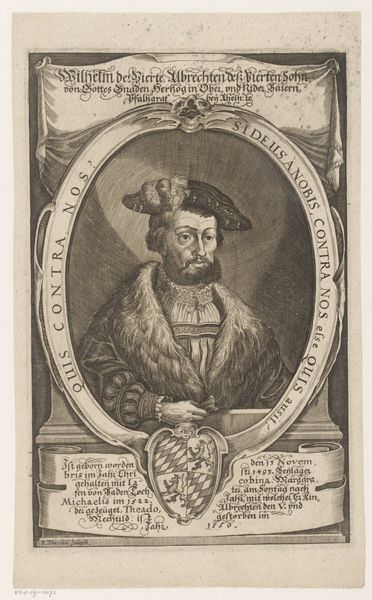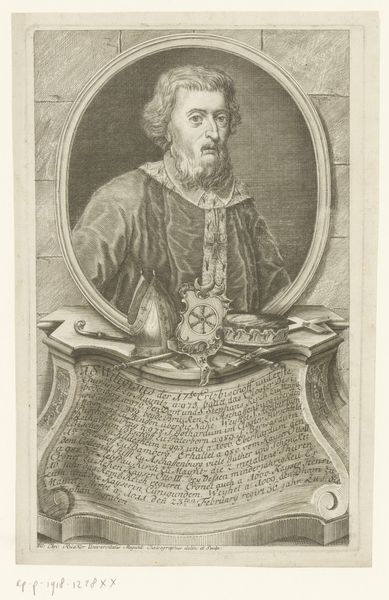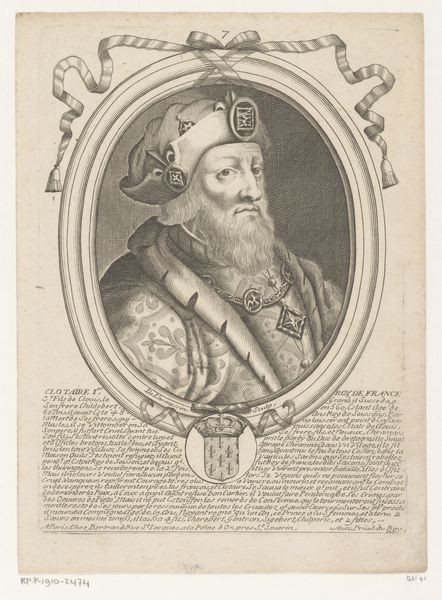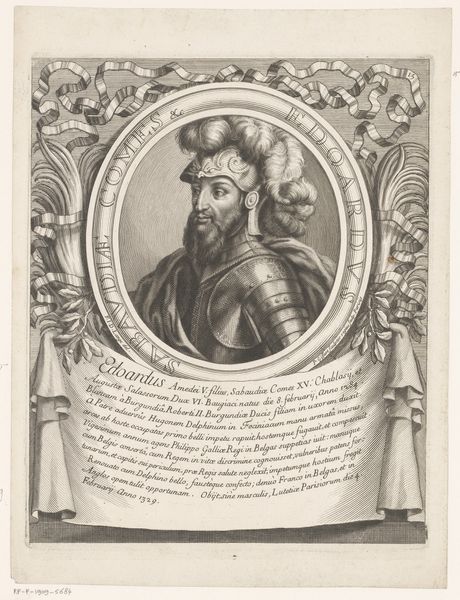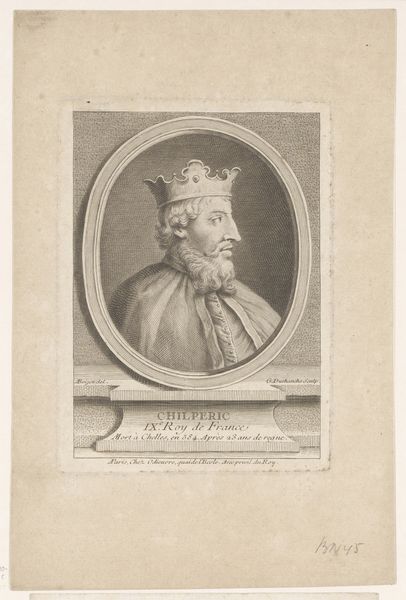
print, engraving
#
portrait
#
baroque
# print
#
old engraving style
#
pencil drawing
#
history-painting
#
engraving
Dimensions: height 156 mm, width 99 mm
Copyright: Rijks Museum: Open Domain
Curator: Up next, we have an engraving, "Portret van Frans I van Valois-Angoulême, koning van Frankrijk," a rendering of King Francis I of France, dating somewhere between 1576 and 1614, created by Thomas de Leu. Editor: Immediately striking is the controlled, almost obsessive mark-making. The dense network of engraved lines renders the subject, conveying not only his likeness, but also an intense feeling of authority and perhaps…melancholy? Curator: That somber tone certainly aligns with some established symbolism of portraiture during that era. Think of the closed composition within the oval cartouche: The oval has been interpreted in period texts as a representation of containment, a visual metaphor for power that needs to be closely managed and defended. Notice how this effect is highlighted through inscription. Editor: Yes, it does add to this feel. Consider, too, the artist's labor, the painstaking work of the engraver, transforming a metal plate through immense physical effort, that also is replicated across each print. The work would likely have involved artisans at many stages of the process in order to achieve such clarity and fine detail. It elevates not just the royal subject, but also speaks to the prestige associated with printing and the materials. Curator: Indeed. And beyond the purely technical aspect, notice the deliberate selection and arrangement of visual elements. Consider, for example, Francis’s elaborate headdress. Its soft, pliable texture directly contrasts with his hard facial expression, and beard, hinting at some inner conflict. It underscores this monarch's vulnerability that is otherwise hidden in his garments and by the poem written in the plate’s lower third. Editor: And how were these circulated? As individual prints, part of larger publications? It tells of something new in contrast to earlier illuminated books for nobility or painting on royal buildings in which one man directed a workshop toward an almost singular expression. Who was the intended consumer here? I can also appreciate the detail and depth conveyed simply through those many, many lines in this black and white work! Curator: Excellent questions! Reflecting upon those production and consumption dynamics, combined with a fresh look at symbolic features, have greatly enhanced my perception. Editor: I concur, there’s always more to discover when we bring process, materials and art into focus with image and symbolic potential.
Comments
No comments
Be the first to comment and join the conversation on the ultimate creative platform.
